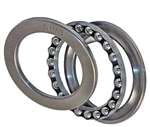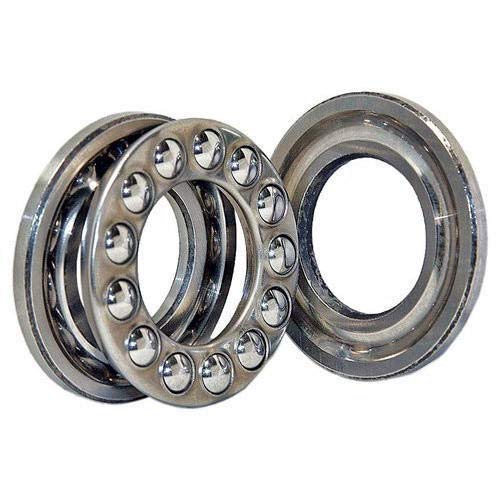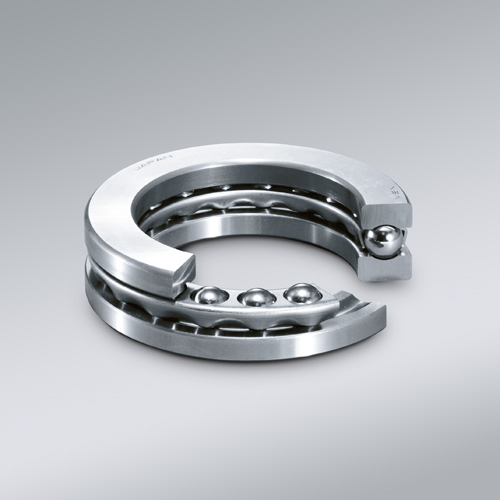Considerations for Selecting the Appropriate Type and Size of Thrust Bearing
Choosing the right type and size of thrust bearing for a specific application is crucial to ensure optimal performance and longevity. Here are the key considerations:
- Load Capacity: Determine the axial load the bearing will experience. Select a thrust bearing with a load capacity that exceeds the application’s requirements.
- Type of Load: Consider whether the load is purely axial or if there are radial components. This will help determine whether a ball or roller thrust bearing is more suitable.
- Speed: Evaluate the speed at which the bearing will operate. High-speed applications may require bearings with specialized designs to manage heat and friction.
- Size and Space Constraints: Measure the available space for the bearing. Choose a bearing size that fits within the designated area.
- Lubrication: Assess the lubrication conditions of the application. Some bearings may require external lubrication, while others are self-lubricating.
- Temperature and Environment: Consider the operating temperature and environmental conditions. Extreme temperatures or harsh environments may necessitate bearings with special coatings or materials.
- Accuracy and Precision: Determine the required level of precision for the application. High-precision applications may need bearings with tighter tolerances.
- Mounting and Installation: Evaluate the mounting options and ease of installation. Some bearings require specific mounting procedures.
- Budget: Factor in the budget for the bearing. High-performance bearings with specialized features may come at a higher cost.
By carefully considering these factors, you can select the appropriate type and size of thrust bearing that best suits the specific requirements of your application.
Enhancing Automotive Transmission Performance with Thrust Bearings
Thrust bearings play a crucial role in enhancing the performance of various automotive components, including transmissions. Here’s how thrust bearings contribute to the efficiency and functionality of automotive transmissions:
- Axial Load Management: Automotive transmissions experience axial loads due to gear engagement and vehicle motion. Thrust bearings are designed to efficiently manage these axial loads, ensuring smooth gear shifting and reduced wear.
- Reduced Friction: Thrust bearings minimize friction between moving components, which is essential for efficient power transmission and fuel economy.
- Enhanced Durability: By absorbing axial loads and reducing friction, thrust bearings contribute to the overall durability and longevity of automotive transmissions.
- Smooth Gear Shifting: Thrust bearings allow for precise axial movement of gears, enabling smooth and accurate gear shifting without jarring or grinding.
- Noise Reduction: Properly functioning thrust bearings help reduce noise generated during gear engagement, contributing to a quieter driving experience.
Overall, thrust bearings are integral to the reliable and efficient performance of automotive transmissions, ensuring optimal power transmission, gear shifting, and overall driving experience.
Advantages of Thrust Bearings Compared to Other Bearings
Thrust bearings offer several distinct advantages when compared to other types of bearings, particularly in applications involving axial loads:
- Axial Load Handling: Thrust bearings are specifically designed to handle axial loads, making them well-suited for applications where forces are directed along the bearing’s axis.
- Compact Design: Thrust bearings have a relatively small profile, allowing for compact and space-efficient designs in mechanical systems.
- Rotation and Linear Movement: Thrust bearings enable simultaneous rotation and linear movement, making them suitable for applications where both types of motion are required.
- Load Distribution: These bearings distribute axial loads evenly across their surfaces, reducing localized stress points and ensuring more uniform load distribution.
- Low Friction: Thrust bearings are designed to minimize friction between moving parts, resulting in smoother operation and reduced wear.
- High Load Capacity: Depending on the design, thrust bearings can handle substantial axial loads, allowing them to support heavy equipment and machinery.
- Precision: In precision applications, thrust bearings provide accurate axial load management, ensuring precise positioning and movement.
- Specialized Designs: Thrust bearings come in various designs, such as ball thrust bearings, roller thrust bearings, and tapered roller thrust bearings, each tailored to specific load capacities and application requirements.
Overall, thrust bearings excel in applications where axial load management is crucial, providing reliable support, smooth motion, and efficient operation.
editor by CX 2024-05-16




